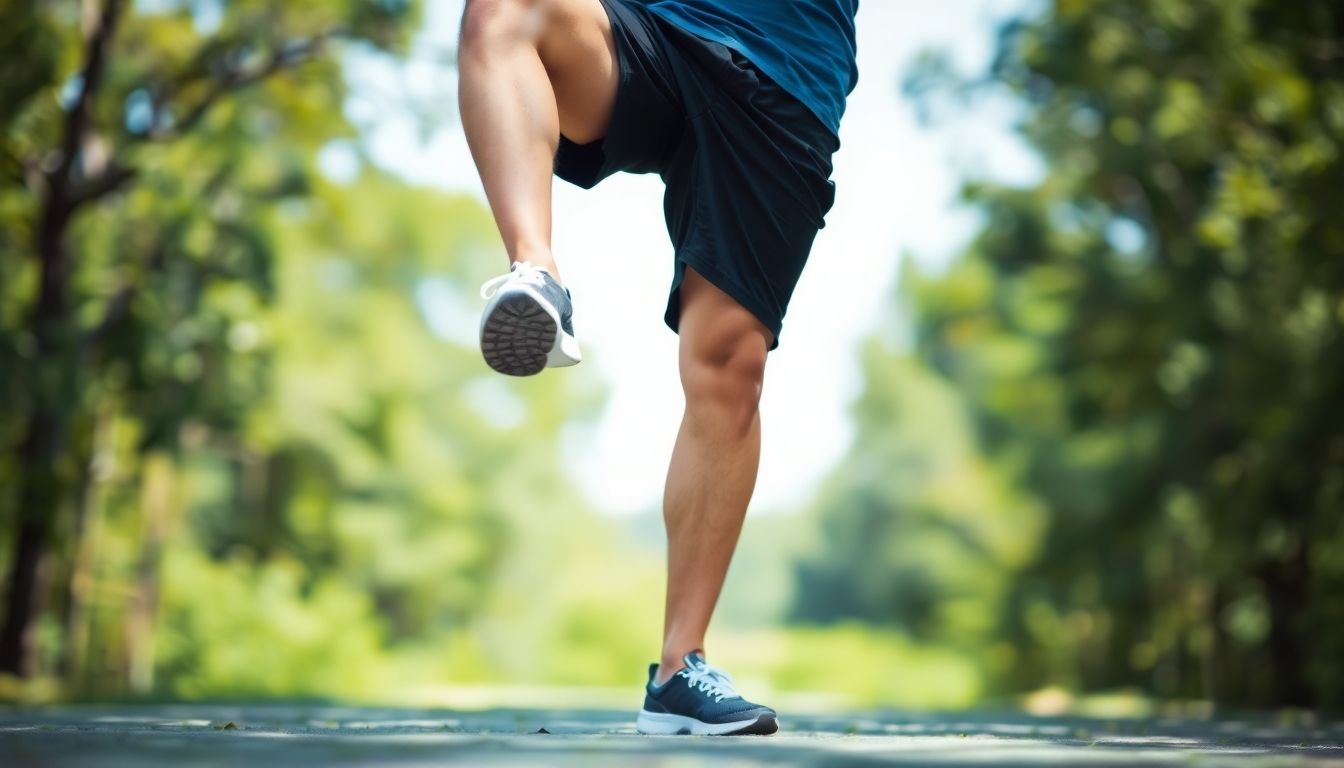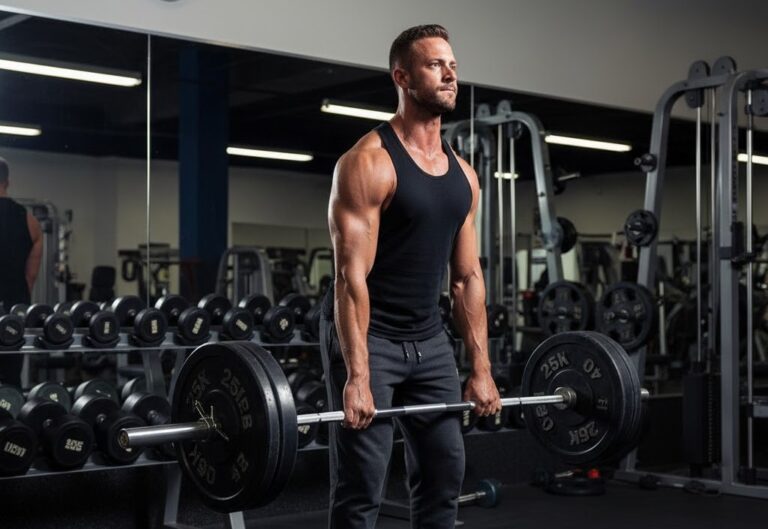So, you’ve only got a few minutes to get a workout in? That’s totally fine. Lots of people think you need an hour or more to really get anything done, but that’s just not true. Even short bursts of activity can make a big difference, but you still need to prep your body and help it recover afterward. That’s where knowing how to warm up and cool down properly in short workouts comes in. It’s about making the most of the time you have without risking injury.
Key Takeaways
- Getting your muscles warm and ready before a short workout helps prevent injuries and makes your movements smoother.
- Dynamic stretches and activation exercises are great for warming up quickly, getting your body moving correctly.
- Cooling down involves bringing your heart rate down gradually and doing some static stretches to help muscles relax.
- Staying hydrated and eating something with protein and carbs after your workout helps your body bounce back.
- Even with busy schedules, you can fit in short warm-ups and cool-downs by breaking up workouts or doing quick “movement snacks.”
The Importance Of Warming Up For Short Workouts
Think of a warm-up as your body’s personal ‘get ready’ signal before you jump into a workout, even a short one. It’s not just about going through the motions; it’s about preparing your muscles and your mind for what’s coming. Skipping this step is like trying to start a car on a freezing morning without letting the engine warm up – you might get going, but it’s not ideal and could lead to problems.
Boosting Muscle Temperature And Flexibility
When you start moving, your muscles generate heat. A proper warm-up kickstarts this process, increasing blood flow to your muscles. This makes them warmer, more pliable, and ready to work. Think of it like stretching a rubber band; a cold one might snap, but a warm one stretches smoothly. This improved flexibility means your muscles can move through their full range of motion without that tight, resistant feeling, which is super important for preventing strains.
Enhancing Neurological Readiness
It’s not just your muscles that need prepping; your nervous system does too. Warming up helps improve the connection between your brain and your muscles. This means your signals travel faster and more efficiently, leading to better coordination and quicker reactions. For any workout, even a short burst of activity, this improved communication helps you move with more control and power.
Mental Preparation For Performance
Beyond the physical, a warm-up is a mental transition. It’s your chance to shift gears from whatever you were doing before to focusing on your workout. Taking a few minutes to concentrate on your movements and maybe even visualize yourself performing well can make a big difference. It helps calm any pre-workout jitters and gets you in the right headspace to make the most of your limited workout time.
Essential Components Of A Proper Warm-Up
Alright, so you’ve got your short workout planned, but before you jump into the main event, let’s talk about getting your body ready. A good warm-up isn’t just about going through the motions; it’s about making sure your muscles are prepped and your mind is in the game. Think of it as tuning up your engine before a race.
General Cardiovascular Preparation
First things first, we need to get that blood flowing and your body temperature up a bit. This doesn’t mean running a marathon, just something light to get you moving. Think about 5-10 minutes of activities like a brisk walk, some light jogging, cycling on a stationary bike, or even jumping jacks. This gets your heart rate up gradually and signals to your body that it’s time to work.
Dynamic Stretching For Movement
Now that you’re a little warmer, it’s time for some movement-based stretches. Unlike holding a stretch still, dynamic stretches involve controlled movements through a range of motion. These mimic the actual movements you’ll be doing in your workout. Examples include leg swings (forward and backward, side to side), arm circles, torso twists, and walking lunges. These help improve your flexibility and prepare your muscles for action without reducing their power.
Targeted Activation Exercises
This is where we wake up specific muscles that will be doing most of the work. Depending on your workout, this could involve exercises like glute bridges to activate your glutes, bird-dogs for core stability, or band walks to get your hips ready. It’s about making sure those key muscle groups are firing correctly. You can think of these as little wake-up calls for your muscles.
Mental Focus And Visualization
Don’t forget your brain! A few minutes of focused breathing or visualizing yourself performing the workout well can make a big difference. Close your eyes for a moment, take a few deep breaths, and picture yourself moving efficiently and powerfully. This mental prep helps reduce any pre-workout jitters and gets you in the right mindset. It’s amazing how much better you can feel just by taking a moment to focus.
A proper warm-up is your first line of defense against injury and your first step towards a more effective workout. Don’t skip it!
Remember, the goal is to feel ready and a little warmer, not exhausted. You can find some great ideas for dynamic movements on fitness blogs.
Effective Cool-Down Techniques For Recovery
So, you’ve crushed your short workout – awesome! Now, let’s talk about winding down. Skipping the cool-down is like leaving your car in park after a high-speed chase; it’s just not good for the engine. A proper cool-down helps your body transition back to its resting state, which is super important for recovery and preventing that dreaded post-workout soreness.
Gradual Intensity Reduction
First things first, don’t just stop dead in your tracks. Think of it as gently easing off the gas pedal. Start by slowing down whatever you were doing. If you were running, switch to a light jog, then a brisk walk, and finally an easy stroll. This helps your heart rate and breathing return to normal levels gradually, preventing blood from pooling in your legs. Aim for about 3-5 minutes of this lower-intensity movement.
Static Stretching For Muscle Length
Once your heart rate has calmed down a bit, it’s time for some static stretching. Unlike dynamic stretches you might do before a workout, static stretches involve holding a position for a period. This is where you can really work on improving your muscle length and flexibility. Focus on the major muscle groups you used during your workout. Hold each stretch for about 20-30 seconds, breathing deeply. Remember not to bounce; just ease into the stretch until you feel a gentle pull, not pain. This helps reduce muscle tightness and can make a big difference in how you feel the next day. You can find some great stretches for post-workout recovery.
Foam Rolling For Muscle Relaxation
If you have a foam roller, now’s a great time to use it. Foam rolling, or self-myofascial release, is like giving your muscles a deep tissue massage. It can help release knots and tension that might have built up during your workout. Focus on rolling slowly over different muscle groups, pausing on any tender spots for a few seconds. It might feel a little uncomfortable at first, but it’s really effective for promoting muscle relaxation and speeding up recovery.
Here’s a quick rundown of what to focus on:
- Legs: Quads, hamstrings, calves, and glutes.
- Back: Upper and lower back, being careful around the spine.
- Shoulders and Chest: Gentle rolling can help release tightness.
Taking just 5-10 minutes for these cool-down activities can significantly impact how your body recovers and prepares for your next session. It’s a small investment for a big return in how you feel and perform.
Hydration And Nutrition Post-Workout
Alright, so you’ve crushed your short workout. Awesome! But don’t just stop there. What you do after the sweat session is just as important for getting the most out of your effort and helping your body bounce back. We’re talking about refueling and rehydrating.
Replenishing Fluids
Think of your body like a sponge that’s been squeezed. After a workout, you’ve lost fluids through sweat, and you need to put them back. Drinking water is the most straightforward way to do this. For shorter, less intense workouts, plain water is usually perfectly fine. If you’ve been going hard for a bit longer, or it’s really hot out, you might consider a sports drink. These can help replace electrolytes, which are minerals like sodium and potassium that you lose when you sweat. It’s not about chugging a gallon right away, but rather sipping steadily.
- Sip water consistently after your workout.
- Consider electrolyte drinks for longer or more intense sessions.
- Listen to your body; thirst is a good indicator you need to drink.
Post-Exercise Meal Strategies
Now, let’s talk about food. Your muscles have been working hard, and they need some building blocks to repair and get stronger. The key players here are carbohydrates and protein.
- Carbohydrates: These are your body’s primary energy source. After a workout, they help restock the glycogen stores in your muscles that you used up during exercise. Think of things like fruit, whole-grain toast, or even a small bowl of oatmeal.
- Protein: This is what helps repair muscle tissue. Aim for a source of lean protein. This could be Greek yogurt, a small chicken breast, eggs, or even a protein shake if that’s easier.
Ideally, you want to get some of this fuel in within an hour or two after finishing your workout. It doesn’t have to be a huge meal. A small, balanced snack can do wonders. For example:
- A banana with a handful of almonds.
- Greek yogurt with some berries.
- A small smoothie with fruit and a scoop of protein powder.
Getting the right mix of fluids and nutrients after your workout helps your muscles recover faster and prepares them for your next session. It’s a simple step that makes a big difference in how you feel and perform over time.
Benefits Of Consistent Warm-Up And Cool-Down
Sticking with a warm-up and cool-down routine might seem like extra work when you’re short on time, but the payoff is pretty big. Think of it as an investment in your body’s ability to keep going strong.
Minimizing Injury Risk
One of the biggest wins from a consistent warm-up and cool-down is keeping yourself out of the injury clinic. Warming up gets your muscles ready to move, making them more flexible and less likely to get pulled or strained. It’s like preparing a rubber band before you stretch it – it has more give and is less likely to snap. Cooling down helps your muscles recover, reducing that stiff, sore feeling that can sometimes sideline you. This consistent preparation and recovery is key to staying active long-term.
Maximizing Performance Potential
Beyond just staying injury-free, these routines actually help you perform better. A good warm-up gets your blood flowing, delivering oxygen to your muscles and waking up your nervous system. This means your muscles can contract more efficiently, and your reaction time can improve. It’s not just about feeling good; it’s about giving your body the best possible chance to do its job well. You might find you have more power, better coordination, or can simply push a little harder when you’ve properly prepared. For more on setting yourself up for success, check out this guide on achieving fitness goals.
Promoting Overall Well-Being
It’s not all about the physical gains, either. Taking the time to warm up and cool down can also be a mental reset. It gives you a moment to focus on your body, clear your head, and transition into or out of your workout. This mindful approach can reduce stress and contribute to a more positive overall feeling about your fitness journey. It’s a small act of self-care that adds up.
Here’s a quick look at what you gain:
- Reduced muscle soreness: Less of that
Fitting Warm-Ups And Cool-Downs Into Busy Schedules
Life gets hectic, right? It’s easy to think you don’t have time for a proper warm-up or cool-down when you’re juggling work, family, and everything else. But here’s the thing: even short workouts benefit hugely from these prep and recovery steps. You don’t need an hour to make a difference.
Breaking Down Longer Sessions
If a full 30-minute workout feels like too much to fit in one go, try splitting it up. You could do a quick 10-minute warm-up and workout burst in the morning, another 10-minute session at lunch, and a final 10-minute cool-down in the evening. It might not feel like a lot at the time, but these small bits add up and are surprisingly effective over time. Think of it as a fitness relay race throughout your day.
Prioritizing Movement Snacks
These are short, focused bursts of activity that you can sprinkle throughout your day. Maybe it’s 5 minutes of dynamic stretches before your first meeting, a quick walk around the block during a break, or a few bodyweight exercises while your coffee brews. These movement snacks keep your body active and can significantly contribute to your overall fitness goals without demanding large chunks of time. You can even find great 20-minute workout routines that are perfect for squeezing in.
Creating a Sustainable Routine
Consistency is key, and that means making your warm-ups and cool-downs a habit, not a chore. Try setting calendar reminders for yourself. If you know you have a busy afternoon, schedule a 5-minute stretch break for the morning.
Here’s a simple way to structure your day:
- Morning: 5 minutes of light cardio (like marching in place) and dynamic stretches.
- Midday: 5-10 minutes of targeted exercises or a brisk walk.
- Evening: 5 minutes of static stretching or foam rolling.
Remember, the goal is to move your body in a way that prepares it for activity and then helps it recover afterward. Even a few minutes dedicated to these practices can prevent injuries and make your workouts more productive.
Even with a packed schedule, finding time for warm-ups and cool-downs is important. These quick routines help your body get ready for exercise and recover afterward. Don’t let a busy day stop you from taking care of yourself. Visit our website to discover simple ways to fit these essential steps into your day.
Wrapping It Up
So, there you have it! We’ve talked about why warming up and cooling down are super important, even when you’re short on time. Getting your body ready before you start and helping it wind down afterward can really make a difference in how you feel and perform. It’s not about spending hours, but about being smart with the minutes you have. Think of it as giving your body the attention it deserves so you can keep moving and feeling good. Stick with it, and you’ll likely notice you feel better and maybe even get more out of your workouts. Happy moving!
Frequently Asked Questions
Why is warming up so important before a short workout?
Warming up gets your muscles ready to move by making them warmer and more stretchy. It also helps your brain and muscles talk to each other better, making you quicker and more coordinated. Plus, it helps you get in the right mindset to do your best.
What are the key parts of a good warm-up?
A good warm-up includes some light cardio to get your heart pumping, like jogging. Then, you do dynamic stretches, which are movements that stretch your muscles as you move, like leg swings. Finally, doing exercises that specifically wake up the muscles you’ll use helps a lot.
How should I cool down after a short workout?
After your workout, slow down gradually, maybe by walking. Then, do some static stretches, holding each stretch for about 20-30 seconds to help your muscles relax and regain their normal length. Using a foam roller can also help ease muscle tension.
Does what I eat and drink after a workout matter?
Yes, it’s important to drink water to replace lost fluids. Eating a snack or meal with both carbs and protein soon after your workout helps your muscles recover and refuel for next time.
What are the main benefits of warming up and cooling down regularly?
Doing warm-ups and cool-downs helps prevent injuries by making your muscles more flexible and ready for action. It also helps you perform better by making your movements more efficient. Overall, it just makes your body feel better and work more smoothly.
How can I fit warm-ups and cool-downs into a busy schedule?
You can break down longer workouts into shorter bursts of activity throughout the day. Even a few minutes of focused movement as a ‘movement snack’ can make a difference. The key is to make it a regular habit that fits your life.





